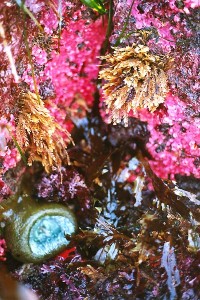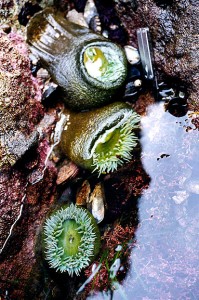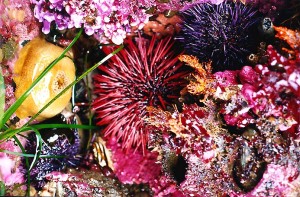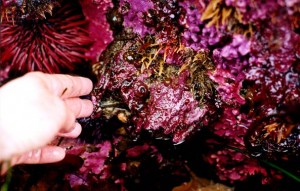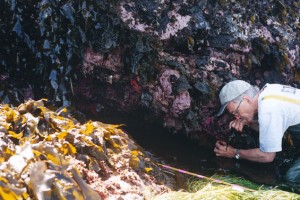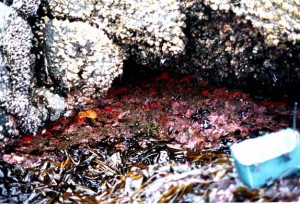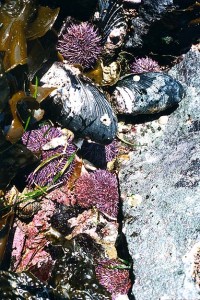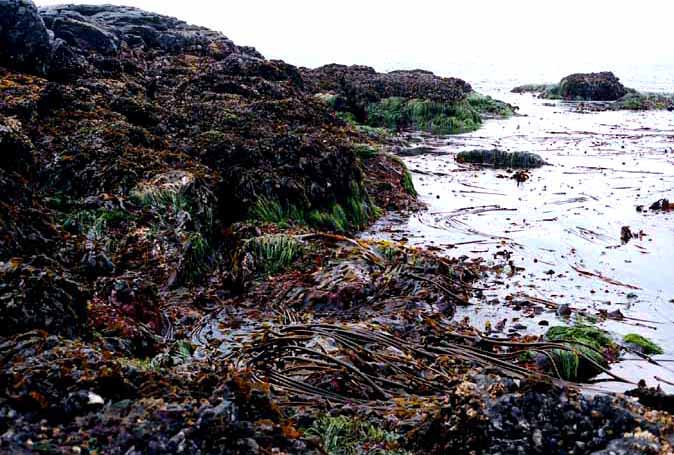 The intertidal zone on the West side of Great Race Rocks as viewed and photographed on June 12, 1999 at a minus 0.1 tide. The predominant macroalgae is Hedophylum sp. although immature bull kelp (Nereocystis luetkeana) is also anchored in this zone close to the shore.
The intertidal zone on the West side of Great Race Rocks as viewed and photographed on June 12, 1999 at a minus 0.1 tide. The predominant macroalgae is Hedophylum sp. although immature bull kelp (Nereocystis luetkeana) is also anchored in this zone close to the shore. 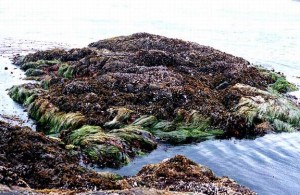 The small island on the North West corner is completely exposed at low tide but submerged at high tide. It contains a rich assortment of hydroids as well as other invertebrates where Dr. Anita Brinckmann-Voss has collected specimens at the zero tidal level.
The small island on the North West corner is completely exposed at low tide but submerged at high tide. It contains a rich assortment of hydroids as well as other invertebrates where Dr. Anita Brinckmann-Voss has collected specimens at the zero tidal level.
Small pink dots of a Melobesia mediocris, a calcareous pink encrusting algae which grows as an epiphyte on the leaves of surf grass.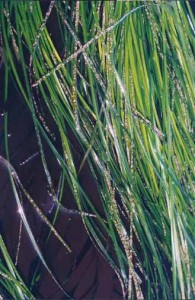
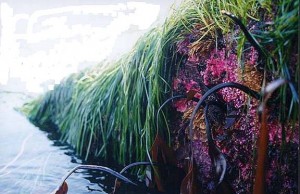 Just below the green fringe of surf grass, Phyllospadix scouleri, pink hydrocorals and other hydroid survive the current and wave swept zone.
Just below the green fringe of surf grass, Phyllospadix scouleri, pink hydrocorals and other hydroid survive the current and wave swept zone.
|
|||||||||||||||||||||||||||||

